[ad_1]
This article is part of a new guide to Singapore from FT Globetrotter
Singapore’s dining scene is one of the most attractive features of the city-state. The island offers an incredibly vast range of restaurants — from the most eye-wateringly expensive and exclusive spots to hawker stalls pricing delicious street food for a handful of Singapore dollars.Â
The country’s cuisine itself is a sumptuous blend of fares originating from south and south-east Asia and China — a mirror of the migrant populations that reached the island’s shores over centuries and now make up a multi-ethnic and multi-religious population of 5.7m.
Given its size, Singapore punches above its weight with one of the richest offerings of international cuisine in Asia. Even the range of Michelin-starred eateries is among the most diverse — Singapore being one of the few cities in the world where even street-food stalls have been awarded the coveted accolade.Â
With so much choice, it is not easy to emerge as an innovative restaurant in Singapore. But the selection below highlights some of the most ingenious dining spots in terms of space, location, menus or food sourcing.Â
Appetite
72A Amoy Street, Singapore 069891
-
Good for: Pairing a meal with art and music
-
Not so good for: Lunch — the restaurant only opens for dinner
-
FYI: Appetite sits above Nouri, a Michelin-starred restaurant. Ivan Brehm is chef-owner of both venues (Website; Directions)Â

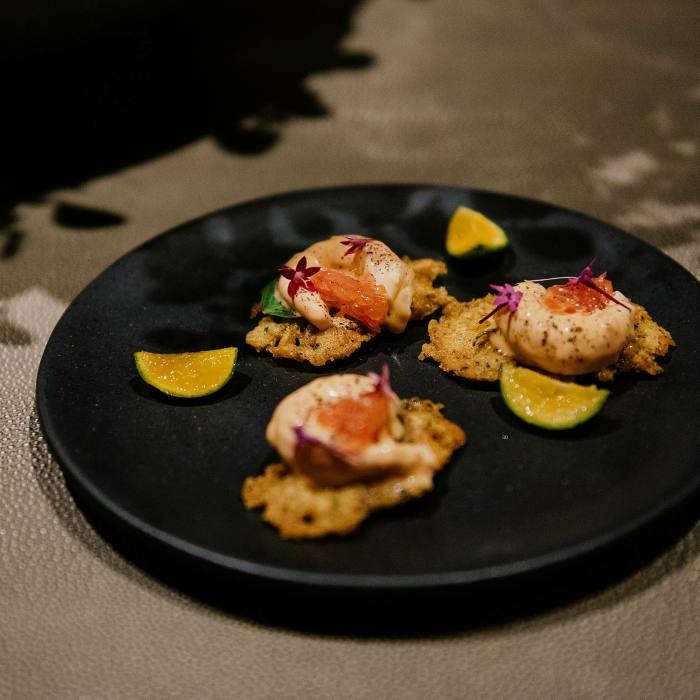
Everything about visiting Appetite feels like entering someone’s gorgeous home: from walking through the unassuming door in one of Singapore’s traditional shophouses and up some stairs, to ringing a doorbell and being greeted into a warmly lit space. With no crowds about — under current distancing rules, only 26 diners are accommodated every night across two very spacious floors — Appetite feels instantly intimate.
Friendly staff guides you through the venue, which is a blend of music, art and food. “We knew when we were opening that we had something unique,†said Ivan Brehm, Appetite’s Brazilian chef-owner. “We don’t know of any place . . . that has this level of rigour applied to every component.â€
The kitchen serves a frequently changing omakase menu (where the chef chooses for you) to eight guests seated around a counter, over which they can observe Brehm — who has previously worked at Heston Blumenthal’s Fat Duck and New York’s Per Se — and his team put together their meal.Â
 “Looking for connections across cultures†is at the heart of Appetite’s food offerings, said Kaushik Swaminathan, the restaurant’s general manager. Less than a year old, Appetite was originally Nouri’s research and development unit (it still publishes research on art history or anthropology of food in collaboration with researchers).
After dinner, you may be invited to have dessert upstairs in the “living roomâ€: a cozy attic space dedicated to music, with an incredibly comfortable sofa from which you’ll have trouble parting. You can enjoy small bites and cocktails there while listening to a curated selection of vinyl plucked from a collection of 3,000 records. Every evening has a different theme, from jazz to 1950s rock’n’roll or funk, soul and disco.Â


Dexter Gordon and Ornette Coleman were part of the soundtrack to a recent meal I had in the music room, which started off with a fresh cocktail by Empirical Spirits, a Copenhagen-based distillery. The buñuelos de viento — crunchy fritters hailing from Mexico, a typically sweet dish — paired beautifully with a Hokkaido scallop tartare filling and a sprinkle of paprika. The tortilla de camarones — fried shrimp cake with a lightly cooked shrimp atop as well as grapefruit and a drizzle of calamansi (Philippine lime) — were a luscious treat.
Appetite is also an art gallery, displaying works for sale across the entire space for three months at a time, sourced from private collectors, artists or other galleries. The current exhibition — on mythology — is entitled We’re Closed on Sundays because It’s God’s Day and includes pieces by Tibetan artist Gonkar Gyatso and Singapore’s Ben Loong.
The next goal? Masterclasses and events. “To populate the place with different types of opinions is at the heart of what we do,†said Brehm. “The vision for this space is very much to get that beneficial friction between different walks of life.â€
Open Farm Community
130E Minden Road, Singapore 248819
-
Good for: Escaping the urban jungle
-
Not so good for: Those susceptible to mosquito bites, if you want to explore the garden — but this is easily resolved with insect spray
-
FYI: Check out Open Farm’s dinner events, which include country-themed dishes and wine pairings that change monthly, or sustainable meals with carbon-neutral ingredients (Website; Directions)Â
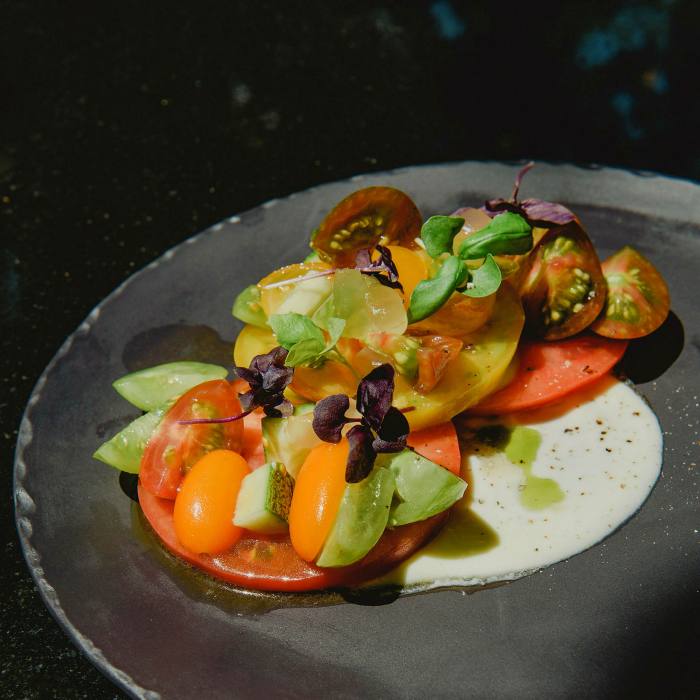
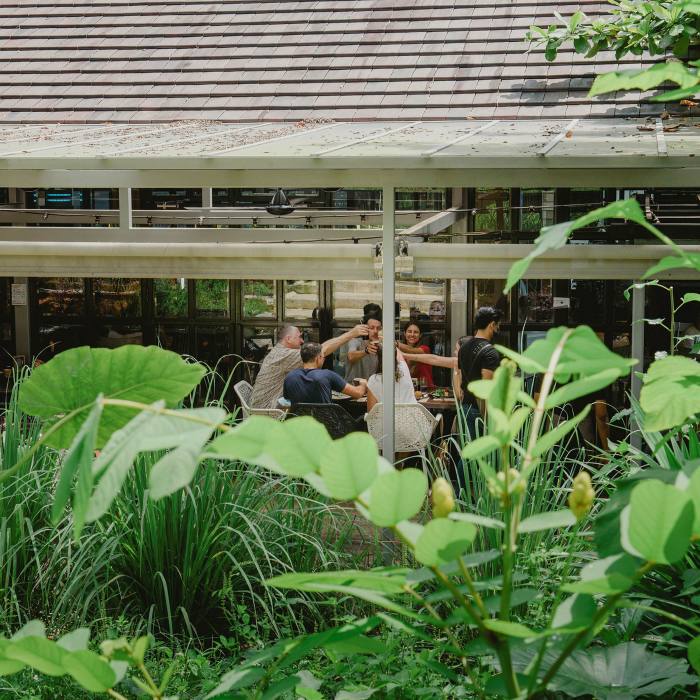
Visiting Open Farm Community gives me the chance to indulge in one of my favourite aspects of Singaporean life — the city’s lush greenery.Â
The restaurant is enveloped in an edible garden with mango, banana and mulberry trees, as well as lemongrass and pandan plants, giving you the chance to be closer to nature, away from the concrete jungle downtown. On a recent visit, a large lizard, a small flock of roosters, a squirrel, brightly coloured butterflies and a couple of hens crossed my path in a matter of minutes as I ventured into the garden, which is dotted with sculptures by local artist Steven Low.
The sound of birds chirping and the fresh smell of trees make for a great setting for a menu — which changes two to three times a week for lunch — based on ingredients sourced from the garden, locally or as sustainably as possible. “You won’t see stuff from too far away because it’s pretty easy to get fairly sustainable products from Australia in the protein department,†said Oliver Truesdale-Jutras, Open Farm’s Canadian executive chef, who has worked all over the world including at Chardon in Arles, in the south of France. “All of our pork and beef is carbon-neutral, organic, no hormones, no antibiotics, the whole gamut. We don’t have anything from North or South America at all.â€
An adjacent farm growing cucumbers, mung beans, corn and okra will help the restaurant reach its goal of sourcing 50 per cent of its ingredients on site, up from about 20 per cent at the moment.


During a recent lunch, I ordered a beautifully crispy battered barramundi topped with a squeeze of lime juice, accompanied by crunchy pickled vegetables. Aloe-vera pulp over a tomato side salad added a sweet, minty tang — most welcome in Singapore’s 30C heat. But what made me gasp at first taste was the fruit-bowl dessert — coconut-flavoured yoghurt, which for its softness seems whipped (but isn’t), covered in explosively sweet pineapple and mango.
On another visit, I attended Open Farm’s Light of the Earth event for Earth Day, where they served delicious drinks such as a basil gimlet paired with a tasty menu including a revisited chicken rice — Singapore’s unofficial national dish — and a delectable quail en croûte with a chutney of mangoes from the garden and a flavourful tomato jam. I left full-handed, with a handcrafted sustainable soy-wax candle by local company Candles of Light and having adopted a stilted mangrove in Borneo’s Kalimantan forest that I can geolocate via a digital platform by Swedish start-up Green Steps Group, which monitors tree planting and CO2 output.
Smith Marine Floating Restaurant
Johor Strait
-
Good for: Spending a day by the sea
-
Not so good for: Non-fishy menu options
-
FYI: Take precautions if you suffer badly from seasickness as the restaurant is on a floating platform (Website; Directions)Â
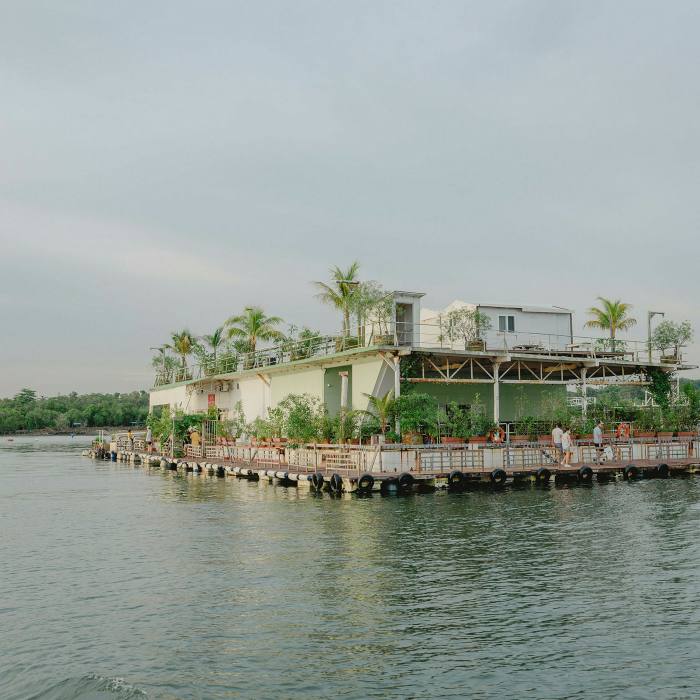

In a Covid-19 world with limited freedom of movement, I was extremely excited to jump on a boat and get away from Singapore’s main island to head for a meal in the middle of the Johor Strait, the sliver of water separating the city-state from Malaysia.Â
I was met at the ferry terminal by Changi airport and about 10 minutes later found myself standing on a large floating platform housing a spacious venue lined with plants and trees.Â
Smith Marine originated as a sea-fish farm, which is still next to the restaurant and tends to about 100,000 fish, according to owner Ong Jong Yang, who turned his fishing hobby into a business 15 years ago. The restaurant opened its doors three years ago “to try to promote local farming products to people on the mainland . . . and prove to them you can actually eat very fresh seafood based on local farmingâ€, Ong said.
One of Smith Marine’s fish is bound to end up on your table — and you can catch it yourself if you like. In my case, I shied away and let a member of staff step in to land a red snapper, which was then steamed Cantonese style with soy sauce and ginger. “You better finish it!†Ong joked. “It took me about 10 months to grow . . . just like taking care of a baby.â€
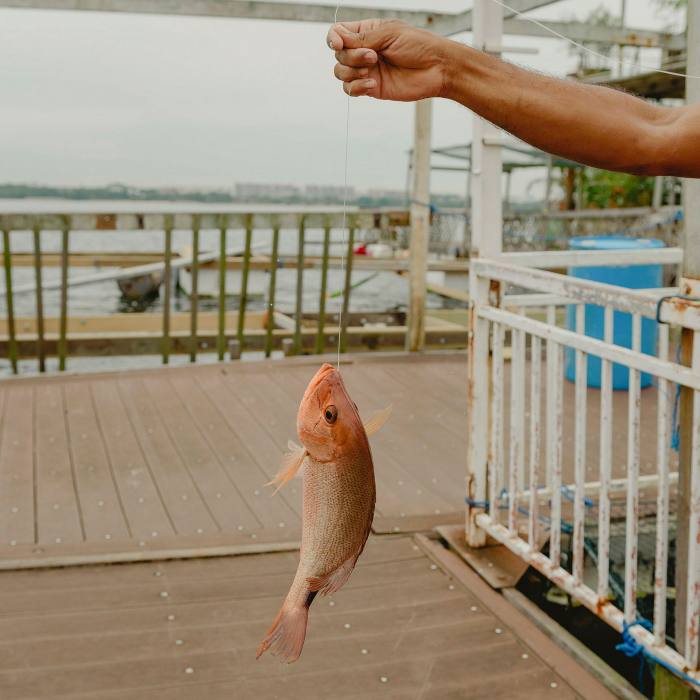

The abundant set menu is priced at S$280 (about £150) for two to three guests or S$380 (about £205) for three to four people, including the two-way ferry. The meal is a collection of comfort seafood sourced from Smith Marine or other local fish farms. The chilli crab — a Singaporean speciality — was a highlight; the crab soft and flaky and the tomato and chilli sauce neither heavy nor watery, or excessively sweet. Just be ready to get down and dirty when cracking open the claws.
The restaurant is casual and a little rundown (the restrooms could use some love), but it gives the space character and a bit of an edge in a city that at times may feel clinically polished. The dining room is filled with large round tables that are ideal for big meals with families or groups of friends. Make sure to head to the rear of the restaurant to sit back on the lived-in rattan chairs — or, quite randomly, a large leather sofa — on a patio that catches the sea breeze.
Reservations must be made for lunch and dinner slots. Booking in the evening has an added bonus: you get to head home on a boat sailing away in the sunset.
Mustard Seed
75 Brighton Crescent, Singapore 559216
-
Good for: Singaporean cuisine with Japanese influencesÂ
-
Not so good for: Availability — reservations are hard to secureÂ
-
FYI: Lunch is only served on Saturdays (Website; Directions)Â


Mustard Seed is a hidden gem in Singapore’s dining scene — albeit one that is very well known among the island’s foodies, who swear by it.
Seating just 13 patrons, the restaurant was founded by chef-owner Gan Ming Kiat, who said he was eager to express “a personal take on Singaporean or local cuisine based on places that I’ve worked at and trained atâ€.Â
Gan spent the early part of his career training in Japanese cuisine before joining Singapore’s Candlenut, the world’s first Michelin-starred restaurant focused on heritage Peranakan cuisine.
Mustard Seed is the product of experimentation at a supper club that Gan hosted for 18 months in his parents’ kitchen in one of the city’s myriad public-housing estates (where more than 80 per cent of the island’s residents live).Â
Run by a team of just three people, Mustard Seed always aims to “try to have a Singaporean angle or focus . . . in terms of flavoursâ€, said Gan, but technique and presentation are “very much inspired by Japanese kaiseki cuisine†— multi-course meals based on seasonal produce that are often deemed the finest level of dining in Japan.Â
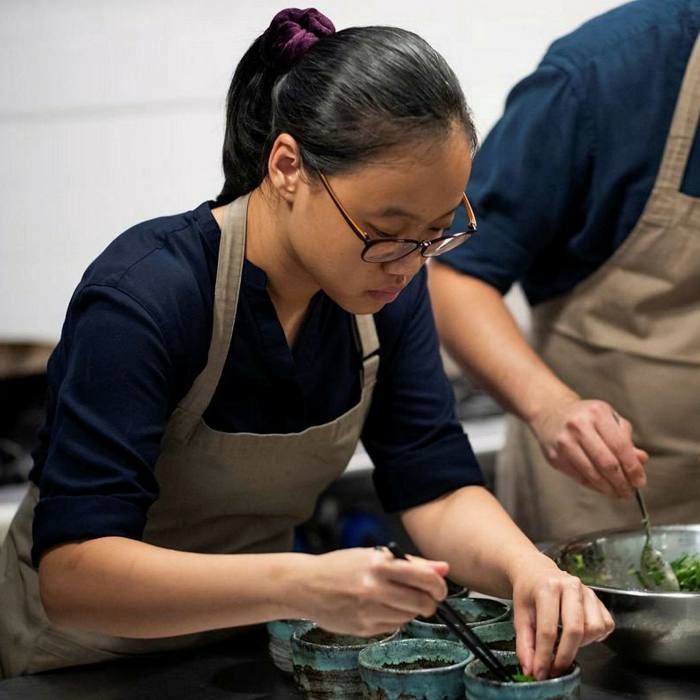

Mustard Seed’s menus run for two months at a time, the current one focusing on yong tau foo (stuffed tofu eaten either dry or in a soup) and also taking inspiration from oden — a Japanese comfort food involving a mixture of ingredients cooked in a soy broth. Pairings with sake and wine in collaboration with artisanal producers are also available.
The restaurant — which opened two years ago — sits in a quiet street in the residential neighbourhood of Serangoon, giving you the chance to escape the frenzy of downtown Singapore and explore a different side of the city.
Making a reservation, however, is less relaxing. “You must get ready for 10am on the first of every month — that’s when seats are released, all of which are snapped up in minutes,†said Christine, a fan of Mustard Seed. “It’s pretty unnerving!â€
The restaurant is fully booked until the end of June. Reservations for July will open on May 1 at 10am.
Photography by Arabelle Zhuang
Singapore with the FT

In a series of articles this week, FT Globetrotter is launching a new guide to Singapore, celebrating the joys of life in the Garden City with insider advice on eating and drinking, exercise, culture — and much more
Mon: Where to find Singapore’s best street food
Tues:Â Four of the most scenic bike routes in Singapore
Wed: Singapore’s buzzing coffee scene
Thurs:Â Cultural experiences in Singapore
Fri: The best — and most innovative — restaurants in Singapore
Sat: Portrait of a park: Singapore’s Botanical Gardens
Which are your favourite innovative restaurants in Singapore? Tell us in the comments
For our other insider city guides, visit ft.com/globetrotter or follow FT Globetrotter on Instagram at @FTGlobetrotter
[ad_2]
Source link






